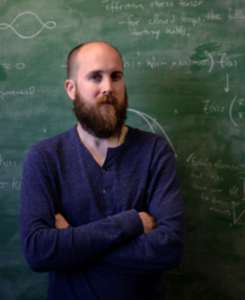Shaping Shells with Swelling
Speaker: Dr. Douglas P. Holmes, Boston University
Date: Oct 20, 2017; Time: 2:30 pm Location: UTEB 175
Abstract: Induced by proteins within the cell membrane or by differential growth, heating, or swelling, spontaneous curvatures can drastically affect the morphology of thin bodies and induce mechanical instabilities. In this talk, we aim to describe how the differential swelling of soft materials induces a spontaneous curvature that can dynamically shape materials. The dynamics of fluid movement within elastic networks, and the interplay between swelling and geometry play a crucial role in the morphology of growing tissues, the shrinkage of mud and moss, and the curling of cartilage, leaves, and pine cones. Small volumes of fluid that interact favorably with a material can induce a spontaneous curvature that causes large, dramatic, and geometrically nonlinear deformations and instabilities, yet, the interaction of spontaneous curvature and geometric frustration in curved shells remains still poorly understood. This talk will examine the geometric nonlinearities that occur as slender structures are exposed to a curvature-inducing stimulus – surfaces crease, fibers coalesce and curl apart, plates warp and twist, and shells buckle and snap. I will describe the intricate connection between materials and geometry, and present a straightforward means to permanently morph 2D sheets into 3D shapes. If we can engineer adaptive structures that programmatically morph on command we will enable opportunities for deployable structures, soft robotic arms, mechanical sensors, and rapid-prototyping of 3D elastomers.
Biographical Sketch: Douglas Holmes is an Assistant Professor in the Department of Mechanical Engineering at Boston University. He received degrees in Chemistry from the University of New Hampshire (B.S. 2004), Polymer Science & Engineering from the University of Massachusetts, Amherst (M.S. 2005, Ph.D. 2009), and was a postdoctoral researcher in Mechanical & Aerospace Engineering at Princeton University. Prior to joining Boston University, he was an Assistant Professor of Engineering Science and Mechanics at Virginia Tech. His group’s research specializes on the mechanics of slender structures, with a focus on understanding and controlling shape change. He received the NSF CAREER Award and the ASEE Ferdinand P. Beer and E. Russell Johnston Jr. Outstanding New Mechanics Educator award.
